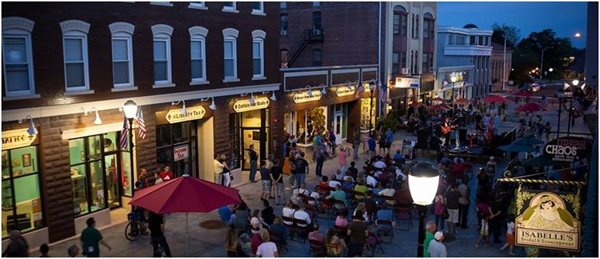Sidebar: Planning for the People
The Legacy of Jacobs and Whyte

Courtesy of Colin Driver/Borough of Somerville. The Borough of Sommerville, NJ closed Division Street to vehicular traffic and turned it into a pedestrian plaza and event space.
How do you create streets that are walkable and bikeable, part of lively downtowns and neighborhoods?
Planners and city officials need to take a careful look at how people actually travel in their communities and use public spaces. That is the guiding insight of what amounted to a revolution in the field of urban planning that began building momentum in the 1950s.
Ivory tower planners in earlier decades sought to use their visions of orderly and rational living arrangements to inspire the wholesale reshaping of cities and towns. The results could be disastrous. Urban planner Le Corbosier’s 1930s plans for modernist skyscrapers surrounded by parks inspired urban renewal programs in the United States that built high rise housing projects set amid concrete plazas —many of which are now being blown up and replaced with low rise housing less prone to crime and more in tune with the needs of residents and communities.
At the center of the revolution was urbanist Jane Jacobs, whose 1961 book The Death and Life of Great American Cities pointed to lively, bustling streets with human scale architecture as the key features of healthy cities. Creating them called for close observation.
“The best way to plan for a downtown is to see how people use it today; to look for its strengths and to exploit and reinforce them,” Jacobs wrote in a 1957 essay Downtown is for People. “There is no logic that can be superimposed on the city; people make it and it is to them, not buildings, that we must fit our plans.”
In urging to make streets “more surprising, more compact, more variegated and busier,” she railed against remaking cities with “monumental” buildings and cultural centers. Jacobs favored new buildings scaled in size with others around them and mixed with older structures. She praised “the ingenious adaptations of old quarters to new uses. The townhouse parlor that becomes a craftsman’s showroom, the stable that be-comes a house, the basement that becomes an immigrants club, the garage or brewery that becomes a theater…”